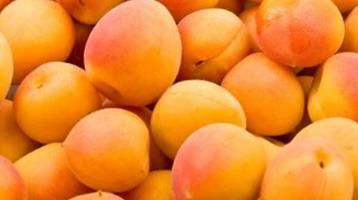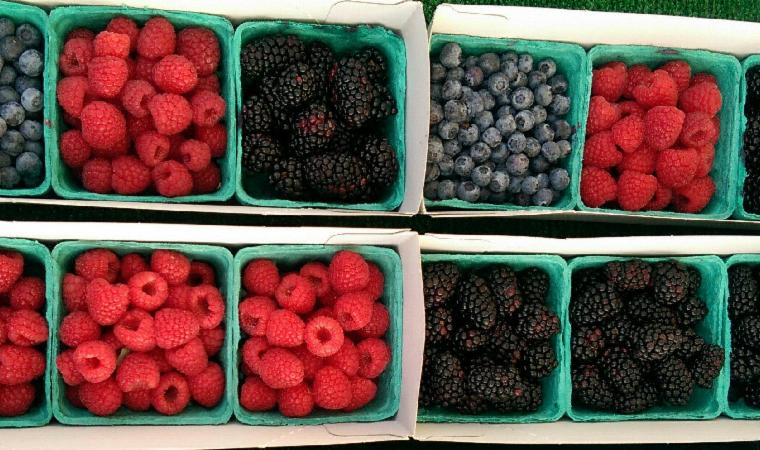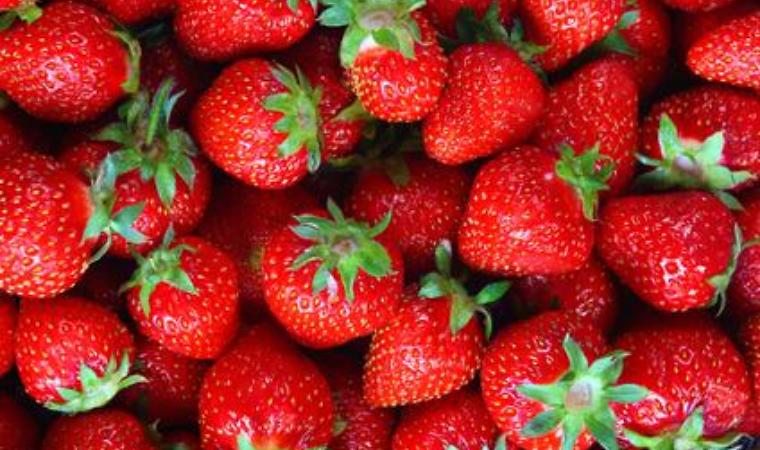Snack Facts: Late Spring and Early Summer Fruit
[shareaholic app="share_buttons" id="27983777"]
Take advantage of this special time of year when certain sweet, fragrant fruits are available for only a short period. Too fragile to store or travel well, the stone fruits and berries that grace the season should be snatched up while available fresh. Grubmarket’s system of same-day delivery direct from the farm is especially beneficial with these fragile fruits, as they don’t travel or store well.
May and June Seasonality (Bay Area)
Stone fruits:
Apricots—May through July
Cherries—April through August
Pluots—May through September
Peaches—May through October
Nectarines—May through October
Plums—May through November
Berries:
Blueberries—May through August
Blackberries—May through October
Raspberries—May through November
Strawberries—March through November

Coming up in June:
Boysenberries—June & July
Fresh figs—June & July; September & October
Melons—June through October
The exact period of availability is different every year and for every region, and in the Bay Area, with its microclimates, for every farm. So you may find these before or after these peak times. Different varieties also mature at different times.
Nutrition highlights of spring fruits
Stone fruits are good sources of fiber and Vitamin C, and great sources of potassium. Their high water and potassium content makes them ideal for quenching summer thirst—try peaches (or melons) with salt instead of Gatorade at the end of a race, plus plain water as needed. The rich yellow-orange color of apricots, peaches, and nectarines is a sign of their high beta-carotene content, especially notable in apricots. The deep red of most varieties of cherries comes from flavonoids known for their potent anti-inflammatory and anti-cancer properties. (Carotenoids, flavonoids, and potassium are available in most fruits and veggies; each has its unique profile that confers equally unique benefits.)

Berries are the most nutrient-dense of all fruits. Higher in fiber and antioxidants and lower in carbohydrates than most fruits, they are the sweet of choice for diabetics, actually helping to stabilize blood sugar despite their sweet taste. Berries are legendary for their flavonoid content, which gives them their deep reds and blues. Flavonoids are plant pigments with potent antioxidant and anti-inflammatory properties, renowned for promoting cardiovascular and brain health and blood sugar balance, and for protecting against cancer. Berries are also terrific source of Vitamin C. They may seem expensive, but gram for gram berries are the best nutrition deal among fruits. Watch out for superfood syndrome, though: berries are great, but each fruit—indeed, each whole food—has unique properties that call for variation rather than fixation of choice.

Judith Silverstein is a Berkeley-based holistic nutritionist specializing in helping people with food intolerances and chronic illnesses find nourishing, healing, joyful, and practical ways to eat. She also advises people seeking to transition away from the standard American diet, including how to source, prepare, budget, and minimize exposure to the negative aspects of the industrial food system. She is a big fan of GrubMarket’s mission to bring eaters and farmers closer together.


